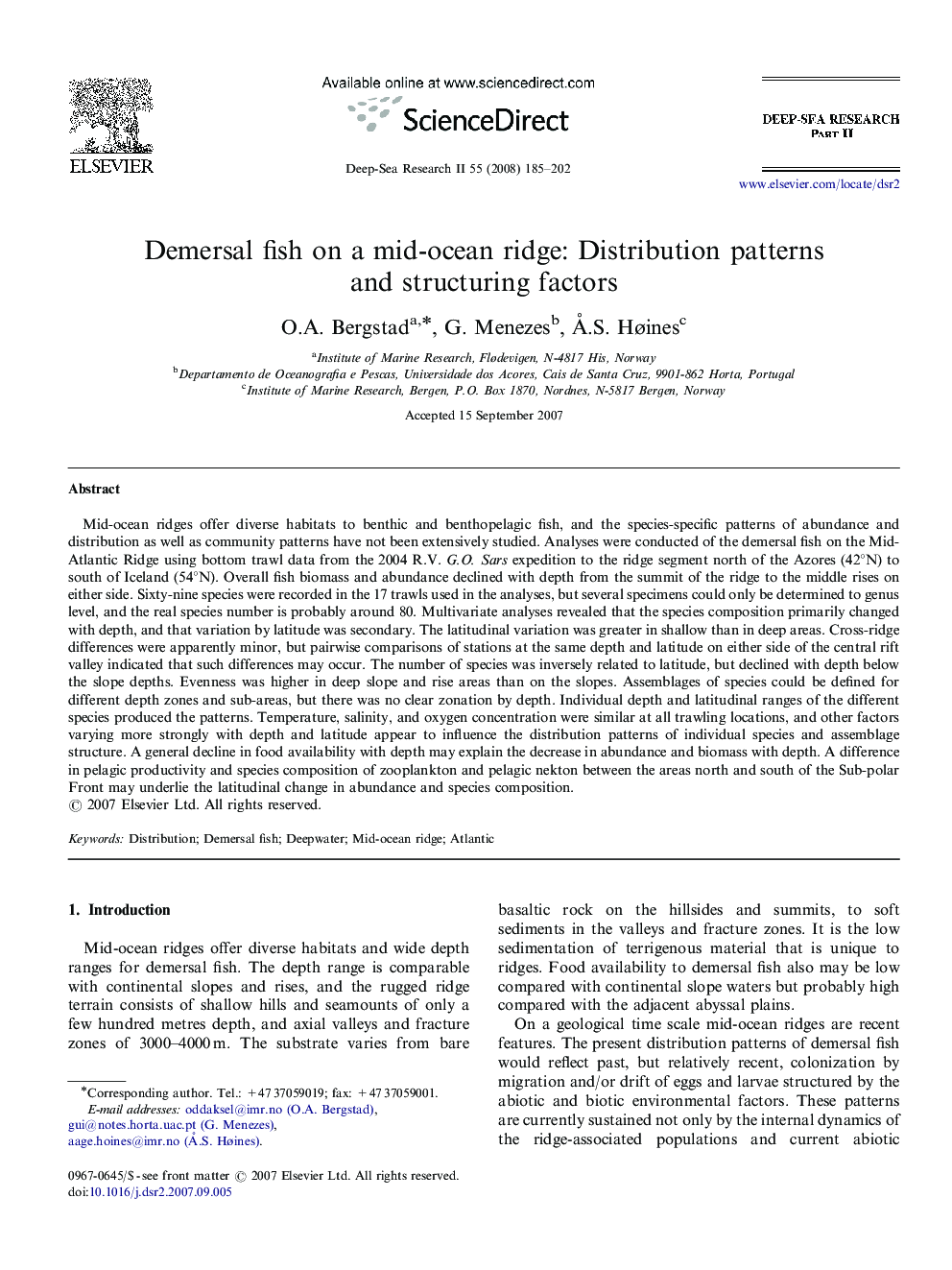| Article ID | Journal | Published Year | Pages | File Type |
|---|---|---|---|---|
| 4537608 | Deep Sea Research Part II: Topical Studies in Oceanography | 2008 | 18 Pages |
Mid-ocean ridges offer diverse habitats to benthic and benthopelagic fish, and the species-specific patterns of abundance and distribution as well as community patterns have not been extensively studied. Analyses were conducted of the demersal fish on the Mid-Atlantic Ridge using bottom trawl data from the 2004 R.V. G.O. Sars expedition to the ridge segment north of the Azores (42°N) to south of Iceland (54°N). Overall fish biomass and abundance declined with depth from the summit of the ridge to the middle rises on either side. Sixty-nine species were recorded in the 17 trawls used in the analyses, but several specimens could only be determined to genus level, and the real species number is probably around 80. Multivariate analyses revealed that the species composition primarily changed with depth, and that variation by latitude was secondary. The latitudinal variation was greater in shallow than in deep areas. Cross-ridge differences were apparently minor, but pairwise comparisons of stations at the same depth and latitude on either side of the central rift valley indicated that such differences may occur. The number of species was inversely related to latitude, but declined with depth below the slope depths. Evenness was higher in deep slope and rise areas than on the slopes. Assemblages of species could be defined for different depth zones and sub-areas, but there was no clear zonation by depth. Individual depth and latitudinal ranges of the different species produced the patterns. Temperature, salinity, and oxygen concentration were similar at all trawling locations, and other factors varying more strongly with depth and latitude appear to influence the distribution patterns of individual species and assemblage structure. A general decline in food availability with depth may explain the decrease in abundance and biomass with depth. A difference in pelagic productivity and species composition of zooplankton and pelagic nekton between the areas north and south of the Sub-polar Front may underlie the latitudinal change in abundance and species composition.
